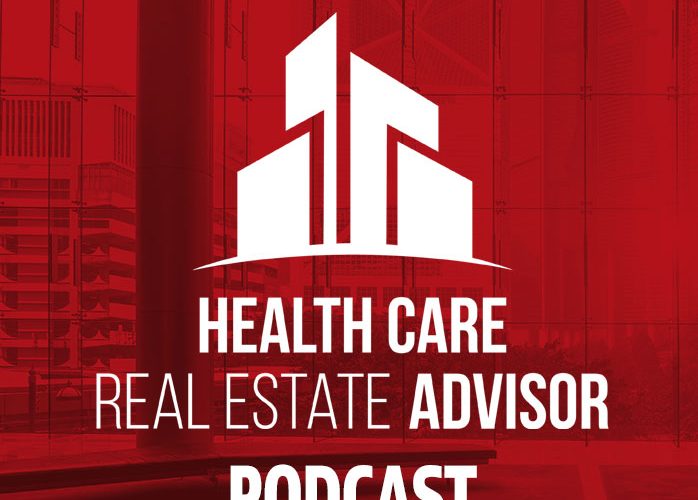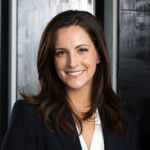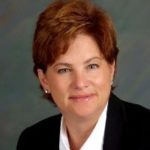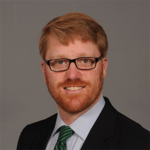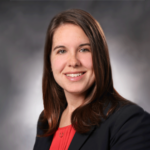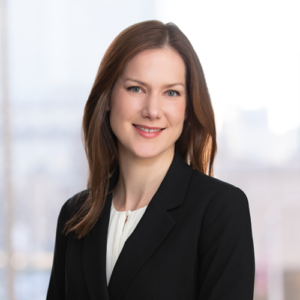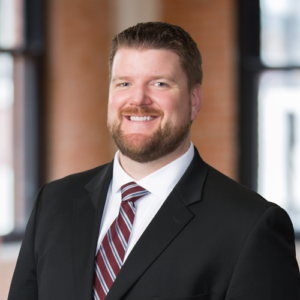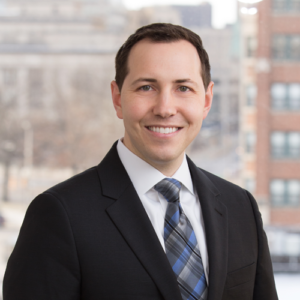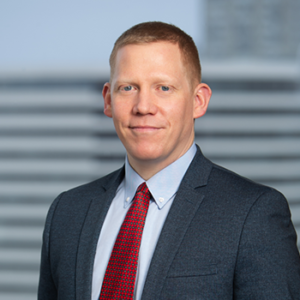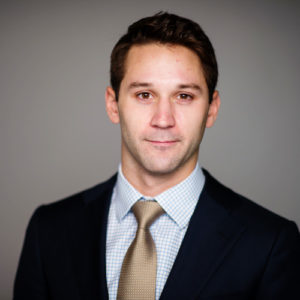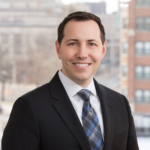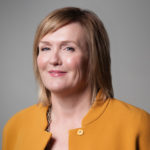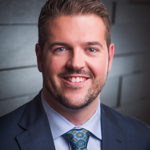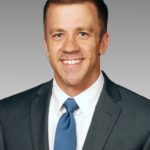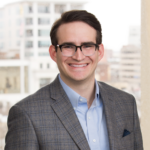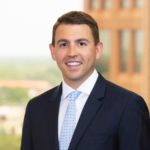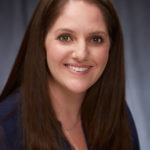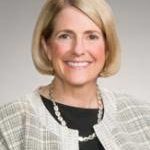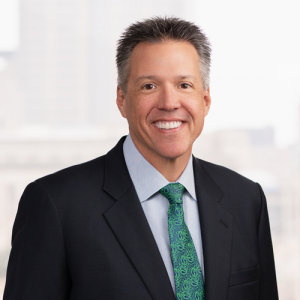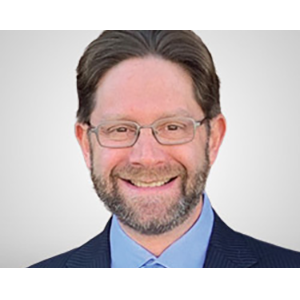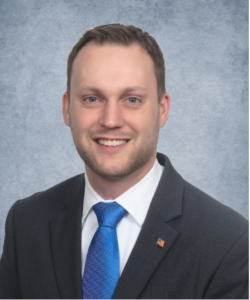An interview with Kevin Jones, Managing Director and Real Estate Practice Leader, ZRG Partners
An interview with Kevin Jones, Managing Director and Real Estate Practice Leader, ZRG Partners
In this interview, Andrew Dick sits down with Kevin Jones, Managing Director and Real Estate Practice Leader with ZRG Partners to talk about professional development and executive recruiting in the healthcare real estate industry.
Podcast Participants
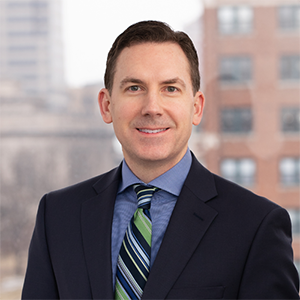
Andrew Dick
Hall Render
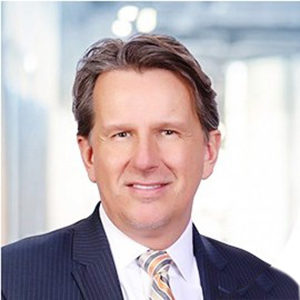
Kevin Jones
ZRG Partners
Andrew Dick: Hello, and welcome to the Healthcare Real Estate Advisor Podcast. I’m Andrew Dick, an attorney with Hall Render, the largest healthcare focused law firm in the country. Today, we will be speaking with Kevin Jones, a managing director and real estate practice leader with ZRG Partners. Kevin helps real estate and healthcare companies with executive searches. We’re going to talk about Kevin’s background, the healthcare real estate industry and what he looks for when recruiting for executive positions within the real estate industry. Kevin, thanks for joining me.
Kevin Jones: Thank you, Andrew. Always a pleasure.
Andrew Dick: Kevin, before we talk about your role at ZRG Partners, let’s talk about your background. Tell us where you’re from, where you went to school and what you aspired to be.
Kevin Jones: Sure. Well, the first part of my career, if you will, is largely uninspiring. I went to Indiana University in Pennsylvania, which spent the rest of my life explaining that’s actually in Pennsylvania and not Indiana. However, I actually joined a recruitment firm right out of school, so I had no industry sector experience. And if I think about my career and my background, it really boils down to three to four significant decisions and changes that I made. The first one is leaving the firm that I started with after nine years to join as one of the partners at Crown Advisors. And crown was only a few months old at that point.
Kevin Jones: And I have a 13 year run to really effectively build that firm, helped build that firm from the ground up. Although at the time, the plan was just to stay there for the next 20 years, I couldn’t see it. The firm, it topped out. And my timing there was that I wanted to do a lot more in the firm, became a lifestyle business, which is great. But it was just focused on the partnership and the lifestyle that the business created. That was the second big risk that I took, is I left just to start the Jones Group. And that’s when I doubled down on my commitment to healthcare real estate.
Kevin Jones: For the next eight years, I focused on becoming a subject matter expert in the healthcare real estate sector, became embedded in the business in that community. That’s where I really understood the value of becoming a specialist. As an insider, you could build meaningful relationships versus just somebody that, who calls into the sector, if you will. So, that was a great run on my own. And I established relationships that I believe will be with me the rest of my career. About three and a half years ago, I was actually approached by a search firm to build a global real estate executive search practice at ZRG.
Kevin Jones: And so frankly, that’s been a heavy lift. But the nice part about ZRG is we have a robust healthcare executive search practice across the board. So I bolted into the healthcare group when I started. And our roots and healthcare as a search firm, we actually have a partner that’s a medical doctor. We focus on clinical academic medical centers and of course health systems, as well as PE backed healthcare firms. So within that group, I was able to use that as leverage to build the global real estate practice. And now, though the real estate practice is anchored in the US, we have outposts in Brazil, London and Dubai and it gives us a legitimate global reach.
Kevin Jones: I still do largely healthcare real estate, but as a practice, we’re doing probably 60, 50 or 60% in commercial real estate. And then I do the balance in healthcare real estate.
Andrew Dick: So Kevin, how did you at some point, and it sounds like many years ago, you identified healthcare real estate as a niche that you wanted to pursue. How did you end up working on searches in the healthcare real estate industry? That’s a pretty narrow niche.
Kevin Jones: Yeah. Yeah. It goes back a while. I was actually at the first BOMA Healthcare Conference in San Francisco. There might’ve been 45 people there. You’d have to, Laurie Damon would have to fact check me on that, but it was very small. And like a lot of people in this sector, Andrew, I had a personal experience that just drew me to healthcare and hospital real estate. So it became an interest. Once I discovered it, it became an interest. And like you build a practice anywhere, you get some companies that are growing and you work really hard to satisfy them and as they grow, your practice grows. And I had done that with a couple of pioneering firms in the sector, where I’d worked closely with their founder.
Kevin Jones: And as they grew market to market, they just tapped me on the shoulder and I helped them open. They went from a local brand to a national brand and I did all those searches. So through that process, that’s how I just became embedded in the business when it was much smaller than it is today. It was an easier effort because when people start to recognize you specialize in their startup sector, if you will, they recognize you. So it was easy to make my way around the block with all the players and as the sector grew, my practice grew. It was really more serendipity than, I did something spot on to make it grow.
Andrew Dick: Sure. So Kevin, give us an idea of the type of assignments you’ve had over the years in the industry. Would this be C-Suite executives or give us some examples?
Kevin Jones: Sure. Yeah. And focusing on the sector, I would say I do C-Suite, as well as the people reporting into the C-Suite. That’s really my strikes zone. And I’ve done some board advisory work, as well. I would say a typical search, it involves… I had done a search for a senior managing director for a group that does healthcare real estate consulting. And the leader of that group, somewhat of a legendary person in the sector frankly, was retiring. So, they engaged us to find that replacement and that’s always tricky to find somebody that’s been embedded and worked with the team for decades to bring a new leader in. And we did just that. It was a very successful search. It took us probably eight months, which was three months too long, frankly.
Kevin Jones: But when you work at that level, you’ve got to work around non-competes, you’ve got to work around other competitive covenants to try to get the timing right. Nobody wants to go against that. But that’s a typical search. And what I see when people come to me often, they’re looking for more than a plug and play person. They want somebody that has deep experience in the sector, but also they have that ability to be the face of the franchise. Somebody that knows how to sell and lead and execute. I see that a lot and I get that a lot. So that’s probably the type of role that I see, because they’re just so hard to find. You really need to know those people first, just to get their attention to consider something because they’re generally well paid, well taken care of because they bring such, three components of value to the organization.
Andrew Dick: Let’s talk about that, Kevin. We have quite a few young professionals who have been in the business maybe a couple of years, the healthcare real estate business. Or young professionals who are looking at getting into the healthcare real estate business. Let’s talk about the skills that you look for and your clients look for when trying to identify talent. You hit on a couple things, the ability to sell, interact well with others, et cetera. Talk more about that. What advice would you give to someone who’s really trying to make a name for themselves in the industry?
Kevin Jones: Sure. And that’s a great question. I actually have kids in that same period in their lives. This is something I’ve thought about. I think it’s, the thing is, it’s not new, right? It’s a generational to generational piece of advice. But I think the first thing is for most people, they need to redefine what sales is to them. Everybody carries around this baggage of what sales is and what it isn’t and the immediate cliches and imagery that comes with it. That’s obviously so old fashioned. I challenge people to, that they really need to just look at that. Do some self discovery and understand really, what’s your hang up on that word and what that means. They need to redefine it because every business is driven by sales and top line revenue.
Kevin Jones: There’s no way around that. And the more you can impact that, the more value you bring to an organization. I think most people, some of the conversations I’ve had with people, they just will tell me, “Well, I won’t sell.” And I think, “All right. Well then, good luck and stay where you are and nestle in, because that takes away a lot of your growth opportunities.” So that’s a little bit of personal work. You really need to evaluate what it is, what your hangups are around it. You need to read on the subject, very contemporary material on what it is, because that really is going to be a game changer. And once you’re able to embrace that and put your talents to use around it, that’s going to change your value to the market. And that changes everything.
Andrew Dick: That’s a great point, Kevin. We have on the team I lead, we have a number of young professionals and we talk a lot about building a personal brand and getting your name out in the industry. And in other words, even as lawyers, we have to sell. We sell a little differently maybe than other industries and we’re subject to ethical rules that prohibit us from doing certain things. But I think you’re spot on, Kevin. I think that in certain circles, when you talk about sales and those types of skills, it can turn people off. But in my experience, individuals who master the art of developing relationships and building a personal brand, tend to rise to the top. And I think that’s what you’re saying.
Kevin Jones: You’re exactly right. That’s what you see across the board. You bring up something else too, is networking is a large part of that. And networking, frankly, networking was real work for me. I mean, I obviously love what I do and it’s a cool business, frankly. But when I would go to a conference, networking would be so challenging. And I probably still haven’t been to a conference in a while, but I still get nervous and feel like I’m intruding. You’ve got to get over all those hangups and networking is an amazing skillset. It’s just that, and it’s like a skillset. You have to practice. You have to do some of the corny role playing. You have to really get outside of your comfort zone and become effective.
Kevin Jones: And that takes, more than anything, the things that I hear now is self-awareness, social and professional awareness, C-Suite and board presence. Those are really important elements and that’s communication skills. That’s style. That’s how you carry yourself, to a T. So you need to keep that in mind. If you want to be in the C-Suite, you really need that self-awareness and social awareness. And if it doesn’t come naturally, even if it does come naturally, it’s something that you need to work on and practice so you’re prepared. I’ve always, I’m going to butcher it, but I’ve always kind of hung on the Abe Lincoln quote. Prepare yourself, for one day, your chance will come. It’s one of those things where you need to be prepared. You need to practice beforehand. And when you find yourself in that situation, you’re ready.
Kevin Jones: Networking’s a big part of that and it’s going to be again. You’ve been in this space for a while too, Andrew. We went from one conference a year to maybe two a month. It is a business in and of itself, or it will be, and that’s fine. That’s a great opportunity to meet people, to sell yourself, to create that personal brand. The opportunities exist and the more you embrace that, the more you get comfortable with it and dive into it versus shy away and just try to back away from conversation… When people talk about coming out of their comfort zone, that’s a perfect example. It really is. And then, that’s when you’d need to develop a self-awareness and have a ready list of conversation points or topics or trends that you’re seeing.
Kevin Jones: Asking questions is always the way to engage conversation. Ask important questions. In those situations, you can start personal, but you really want to be able to learn how to leverage that into business. What do you want to ask about your legal needs, about your recruitment needs and your growth strategies? That’s when you have those conversations. Everybody’s at ease and disarmed, and it really is just a conversation. We both know everybody loves to talk about that. Nobody doesn’t want to talk about their growth plans or their growth strategy or their troubling situations professionally. So, develop a strong list of questions to ask, and that makes it a lot easier.
Andrew Dick: Great advice, Kevin. Let’s dig just a little deeper for the folks who are starting out in the industry. Talk about in your experience. I mean, you hit on a couple things about some individuals are maybe introverted or are uncomfortable networking and putting themselves out there a little bit. What tips do you have in terms of, do those individuals, should they seek out mentors who can help them or coaches? We live in a world where there’s an awful lot of coaching going on, which I find really interesting. What tips would you give? Do you see executives or young professionals seeking out mentorships with more senior level professionals to help them through that journey?
Kevin Jones: Yeah. Obviously, mentoring works, but it often doesn’t work. It’s not like you can be assigned or go up and approach somebody and say, “Be my mentor.” Right? And you might pick the wrong person. You really might. My advice, my approach to that is, and it’s think of it more of not like the old way of I’ve got one mentor and I do whatever that person tells me and I follow them around. But maybe target three people, three types of mentors and define what they are. Somebody that’s just amazing in sales and networking. Somebody that technically has a lot of depth, and somebody that you respect from an integrity standpoint, that seems to have the, I’m not going to use the word balance because I’m not a fan of that approach. It’s somebody that has balanced a career and a family or healthy relationships outside of work, is a better way to put it.
Kevin Jones: You don’t just walk up to the person and ask, but again, you develop your list of questions. And when you are around people like that, whether it’s a cocktail party or a conference, you have your line of questions. So, how did you get into what? Just like we’re engaged in here, right? Where are you from? What do you do? What do you do outside of work? Those are easy questions to answer, and then you feel yourself out. You’re going to resonate with somebody or not, and then you just latch on. And a mentor, that’s not a lifetime relationship, right? Somebody might just, it might be a five-year gig if you will, of where you need that help, and then you maintain those relationships. And they’re meaningful relationships, that you don’t have to just find one person that you follow around for 30 years. That’s an old fashioned way, in my opinion. And I think you can get a lot of value from different perspectives.
Andrew Dick: Good advice. Before we talk about some trends in the healthcare real estate industry, let me just ask one more general question, Kevin. When you’re undertaking a search, I know ZRG has a number of different tools to help find the right person. Maybe talk about how that search process works when you narrow the list of candidates and what metrics are you looking at? I think you’ve hit on some of them, sales and ability to work well with others. But how does that work when you narrow the field?
Kevin Jones: That’s a good question. Well, and look, that’s the reason I joined ZRG. I’ve always been in smaller boutique, real estate focused companies, whether my own or at Crown and when I started. And ZRG is very different. We’re actually the fastest growing search firm, maybe two out of the last three years. Through the pandemic, we’ve added maybe 10 plus managing directors where everybody else was shrinking. So it’s a very contrarian minded search firm and our approach and our thinking is to be the biggest search firm outside of the top five. We’re not looking to then become public or the size of a Korn Ferry or Heidrick because when we compete against those firms, we’re more nimble. We’re more flexible. Our culture is genuinely collaborative and that makes us better as a firm, as we approach these searches.
Kevin Jones: And like any sector, people grow tired of the old guard, of the way they’ve always done things and they want to do something different. And search is no different. And I agree, I’m glad you noticed our tools because they really are unique. It’s more than just a prop that we can set up. The assessments we do, and really, it’s the skills and attributes grid that our CEOs developed and we’ve refined over years. But it weights key skills and attributes, and we’re able to then create data points along the lines for each candidate. So you can rank them, frankly. Let’s say you create a batting order, but we’re very clear that doesn’t make your decision for you. It just gives you data points. You’re still having to hire the person.
Kevin Jones: This creates a very interesting dialogue because some people might score people differently or differently from us. You’re able to pick out what those points are. I think the strongest aspect of using our dashboard of tools, it keeps everybody on the same page where everybody’s interviewing, say on the seven same skills and attributes and what we’ve determined to be keys. In real estate, I find the interviewing technique is click and close. Once somebody clicks with somebody, they try to close them on either side of the table. And this process, it really forces the team because you’ve got to answer back to your team in terms of, this is how I ranked this person on all of these attributes. You can’t just then drift off into sports or family or politics, whatever you might be off topic. It forces everybody on the team to interview from the same criteria.
Kevin Jones: So everybody’s evaluating that candidate. I always think the value of a search firm is we continue evaluation. We’re doing a search right now for a chief revenue officer. There’s a lot of likeability around, say the two lead candidates, but from our process, we’re still in market talking to people. We’re also continuing to evaluate these candidates. We’re not just assuming, this is the person that we’re going to go through and hire. We’re continuing to critique and evaluate and share that with our client. That’s valuable because that’s where mistakes in hiring are made. You have that good first interview, and then you just glide to the finish line versus the continuing conversation, digging deeper. You’ve got this.
Kevin Jones: And I’ll go through frankly, through a process and I’ll re-rank my skills and attributes. The deeper you get to know somebody in the process, they might go from a four to four and a half or four to three, because as you dig and you talk to that person, I might talk to somebody 15 times through the course of a search candidate. You’re continuing to revisit and ask questions and that really helps in our clients just getting that right person in the seat. Does that answer your question?
Andrew Dick: It does. Just one follow up, Kevin. You talked about one search that took approximately eight months. When you’re hiring, I mean that was a special search, you’re replacing a leader of a group. On average, how long does the process take when you’re going, hiring maybe a C-Suite executive? Is it five months, six months? Or how long can someone expect to take, to go through a process?
Kevin Jones: It’s a three month process to identify and get commitment, and then you’ve got to work through the final piece of resignation. But yeah, within three to four months, the heavy lifting will be done and you’ve got one candidate that you’re finalizing. You should have somebody warming up in the bullpen as well, just in case.
Andrew Dick: Okay. And one more follow up, Kevin, because I enjoy this discussion. I find when I talk with professionals in the real estate industry, sometimes I feel like there are folks who are focused on the salary offered by a position. But in my opinion, that seems shortsighted. What are you seeing in terms of individuals looking for growth and opportunity? What’s your advice to a young person? It seems to me that they shouldn’t be focused just on salary or the location of the opportunity, but really, is there an opportunity to grow, to learn, to be mentored? What advice would you give there when an individual’s kind of considering a couple of different opportunities? What do you think is important?
Kevin Jones: Sure. Again, a very good question. It goes back to the advice you’d give. The other piece I would give to somebody that’s looking at a career is, re-examine what work means to you. So many people get hung up on work-life balance and whether they’ll be home and what their commute will look like. I really look at it is don’t even use the word work. You’re just spending your time. You can build a foundation, a professional foundation and a personal foundation to grow and merge those two. There’s a bridge between that. It’s not one or the other. So, I do. And work’s one of those things where we have these concepts that we’ve never questioned. They just kind of come up through our upbringing and we never reevaluate these things that we learned from a young age. Sales and work are two things that I think are worth reexamining throughout your life.
Kevin Jones: But the question is, to go back to your question, Andrew, I would say this, is you’re exactly right. People get hung up on salary and they get hung up on title and things like that. When you’re at that pivot point, and I’d mentioned mine. There were three to four really that were pivotal in my career. I think you need to recognize when those periods are in terms of, this is a pivot move and this is an opportunity. And then don’t ask yourself, what will I make in the next 12 months? But you need to sit and who am I going to be in the next three to five years? How can I grow? Who can I transform into being with this experience? And we see that with our private equity clients all the time, of when you join a growing private equity operating company and take that through a cycle, you’re a different person.
Kevin Jones: You’ve got a merit badge after that because of your experience there. So think about who you can become in this role versus what you’re going to make in 12 months. I think if you step back and take that process, that’s going to be very clear and that helps your answer. Now, comp always comes into play. It’s why we do it, certainly. But if the comp is close and one just has something more exciting to it, then you should certainly take that risk. It’s not a risk-free professional life that we live in, and you need to make smart risks and you need to make sure that the return isn’t so much in 12 months. I’ve made several moves where I actually had to take a step back. What I’ve learned through that process has been, the return is extraordinary. That’s what I would switch around and reconsider when people are looking at that.
Andrew Dick: Good advice. Thanks, Kevin. Let’s switch gears. Let’s talk about the healthcare real estate industry. The industry has grown tremendously. As you mentioned, you were at, I think the first BOMA MOB Conference, a small conference pre-COVID. It’s turned into what I would consider to be a mega conference, thousands of people. And then I think through COVID, we’ve seen even more growth in demand for healthcare real estate assets. Give us your perspective on the industry today.
Kevin Jones: Yeah. Well, it’s certainly different. There’s a couple things. If you recall, Andrew, I remember when the Affordable Care Act was a game changer the first time it came through. And the industry stood still waiting for some sign to act, a green light or red light to have certainty to go forward. And now, healthcare needs to be as nimble and decisive as any other sector. The old school bureaucracy, this is how we’ve always done things. It doesn’t translate into 2021. And we’re seeing a lot of that, frankly. We are seeing that old guard, that old way of thinking, it doesn’t translate and it’s not going to transform into future success, even if its worked in the past.
Kevin Jones: And frankly, I feel it’s an exciting time to be in healthcare if you’re prepared to be part of the change. If you’re clinging to what is, and that’s obviously always scary, regardless of what you’re doing. I’m seeing it. If you look at trends, I would be remiss not to say the words, proptech or data science. Those elements are becoming embedded in every sector, the technology efficiencies and data science. So I’m not minimizing that, but I don’t think that’s an insightful trend right now. That’s an obvious trend. I’m working with some firms that are leveraging machine learning and AI in terms of investment strategy and thesis, in terms of underwriting. It’s really a remarkable, if not scary, the depth that machine learning is coming into real estate from a decision making standpoint.
Kevin Jones: So I think that’s really interesting, where it just takes a more global picture, demographics, returns, all the things you want to put into the pot of stew. And it’s coming out with really smart and insightful answers. That’s really where I’m seeing in terms of technology, the proptech, the data, that’s really important. But there’s more to come and there’s even more forward thinking when it comes to applying technology within commercial real estate. In residential, for that matter.
Andrew Dick: I would agree. I think that there is. I’ve seen an awful lot of growth in site selection technology that’s really interesting. We’ve seen an awful lot of growth in telehealth and retail healthcare. And when you see a lot of private equity firms, as you mentioned, getting into this business, the healthcare business and the healthcare real estate business, I think we’re going to see more and more change. They’re typically very aggressive in trying to implement new models, so it’s exciting.
Kevin Jones: It’s exciting and it is different. The evolution is important. It goes back to my business in executive search. I mean, certainly that’s my day job, but with the changes and the speed of change right now, as a practice, my services have evolved into further introductory services. Whether it’s capital markets, joint ventures, project and pipeline introductions, mergers, team carve-outs. So, people are coming to me less with, “Hey, I need to hire this individual,” though that’s still the business. But more, “This is my larger problem of what I’m trying to solve. How can you help me solve that larger problem?” And it isn’t necessarily… A great example is this. We’re seeing more chief revenue officer searches right now. I think you could quickly just say, “Oh, that’s a head of sales,” but it really isn’t.
Kevin Jones: As you know, so many people that are trying to grow, they’ll hire a VP of business development and stick them in a region and say, “Grow the region.” Market facing people. The chief revenue officer role is transformative because this is a person that comes in that’s part of the C-Suite, and they’re really creating that repeatable systematic revenue process. If you have the right person, they’re not only looking at driving growth in revenue, but they’re creating systems and procedures to work with the sales team. And really, they should be strong assessors of talent to recognize this is the model. This is the model of person that we need to plug into this role, not just a VP of business development to go knock on doors.
Kevin Jones: And then the other component is identifying your client base. And how do you build more revenue from that in a very creative way? And then, how is that sustainable? How do we create revenue when the development market dips? How do we still keep cashflow and revenue expanding? That’s a strategy role, but the skill set really is in sales and marketing. But more so than just being a savvy client facing sales pro, the person brings a next level strategy to the business that frankly, the CEO, COO and CFO, they generally don’t have that background, that technical background. They also are not devoting the time to do that because they’ve got other full-time jobs.
Kevin Jones: So that’s been another trend that we’re seeing of people bringing in that transformative CRO. And that goes to the point, really part of the thing that we’re discussing here is the business is changing quickly. It’s exciting if you’re out in front of it. The problem I’ve seen is so many firms think they’re out in front of it. They feel like, yeah, we’ve got this. We’ve been through this before. But it’s a different, this, it’s a different scenario than it has been historically.
Andrew Dick: So Kevin, I have one more question as we wrap up. We’ve seen a lot of articles in the real estate industry about work from home and what that’s going to mean post COVID. What’s your take? Are we going to see organizations ask their teams to come back to the office? What will that look like? Any predictions?
Kevin Jones: That’s a big one. And this is just my opinion. I’m not an expert in that world. That involves sociology, psychology. The people that think everybody’s, everything’s going to go back to work from the office, largely have large office portfolios. So they can’t afford to even think anything different. I do see people coming back, but in a very different manner and a more effective manner, not just for Face Time. I have got clients and I know firms are looking to bring everybody back full time. I think that goes the way of the tie, right? Once you stop wearing a tie, it’s hard to put one back on. I think we’ve got a great experience on how to do this, but the real factor is having the right person.
Kevin Jones: If you’ve got the right person, they could work from anywhere and be productive. And if you have the wrong person, they can be in the office every day and still not quite get it and get it done. I don’t see office going away. If you look at your office, I think our own personal experiences play to it. I’m in a role where I can effectively work from home, but I’m very excited to get back on the road and work face to face. I still go into my office twice a week right now because I crave that interaction and you can’t create, or even have a culture if everybody’s working from home. I think everybody’s grown tired of the video conferences.
Kevin Jones: They’re very effective and they’ll play a greater role going forward. But I think we all know as a society that Face Time, personal interaction, it’s not healthy to do away with that in any, whether it’s professional or personal. You need to build that into your business plan, frankly, and make sure it’s effective.
Andrew Dick: Well, Kevin, I’ve enjoyed this conversation and I’ve enjoyed getting to know you over the past 12 months or so. Where can our audience learn more about you and ZRG Partners?
Kevin Jones: Sure. Easy to find, ZRGPartners.com is our website. My email’s KJones@ZRGPartners.com. So those are two very easy ways to find me. I’m all over LinkedIn as well, so I’m easy to get to.
Andrew Dick: Well, thanks again, Kevin. Thanks to our audience for listening to the podcast on your Apple or Android device. Please subscribe to the podcast and leave feedback for us. We also publish a newsletter called The Healthcare Real Estate Advisor. To be added to the list, please email me at adick@hallrender.com.

